Fed Governor Adriana Kugler to resign
Introduction & Market Context
Adidas AG (OTC:ADDYY) presented its second-quarter 2025 results on July 30, showing continued momentum following its strong first-quarter performance. The sportswear giant maintained its growth trajectory with significant improvements in profitability, despite facing external challenges including tariff pressures. The presentation highlighted Adidas’ success at the UEFA Women’s Euro 2025, which broke attendance records and provided a strong platform for brand visibility.
Quarterly Performance Highlights
Adidas reported robust financial results for Q2 2025, with currency-neutral net sales increasing by 8% to €5,952 million. The Adidas brand performed particularly well with 12% growth. The company’s gross margin improved by 0.9 percentage points to 51.7%, while operating profit surged by 58% to €546 million, representing 9.2% of net sales.
As shown in the following financial highlights from Q2 2025:
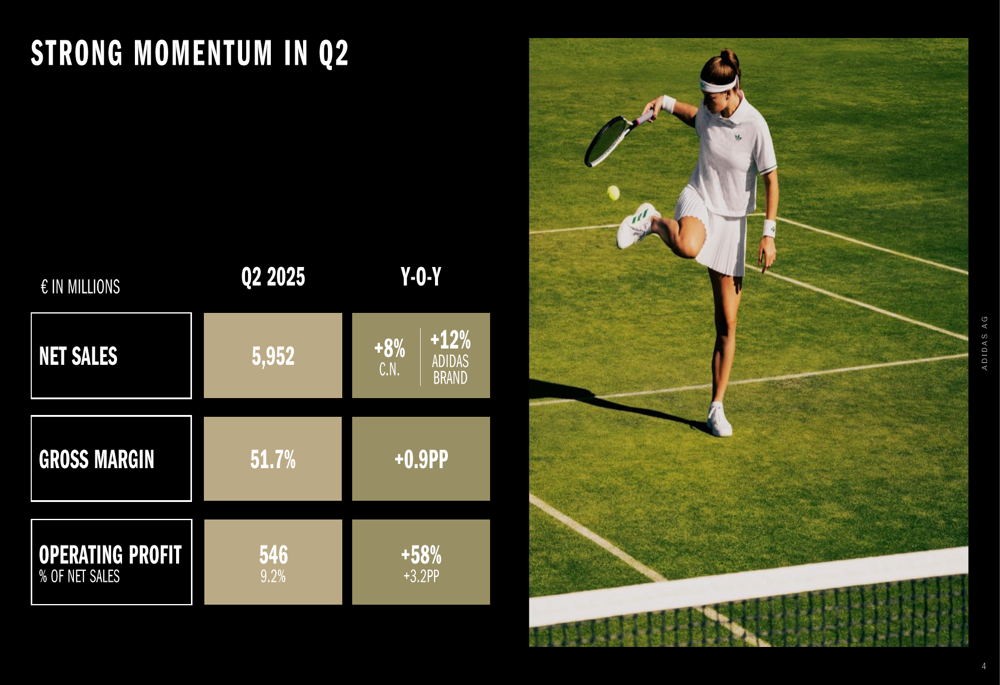
For the first half of 2025, Adidas delivered even stronger results with net sales reaching €12,105 million, a 10% increase on a currency-neutral basis. The Adidas brand grew by 14% during this period, with operating profit jumping 70% to €1,156 million, representing 9.6% of net sales.
The following chart illustrates the H1 2025 performance:
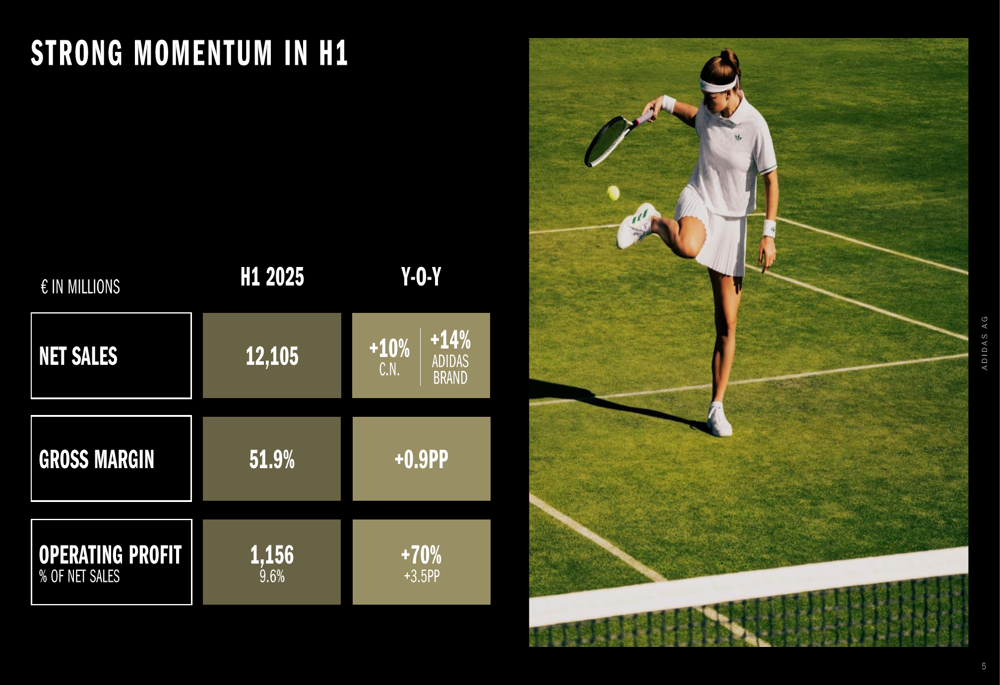
Examining the profit and loss statement in detail, Adidas showed improvements across key metrics when comparing Q2 2024 to Q2 2025:
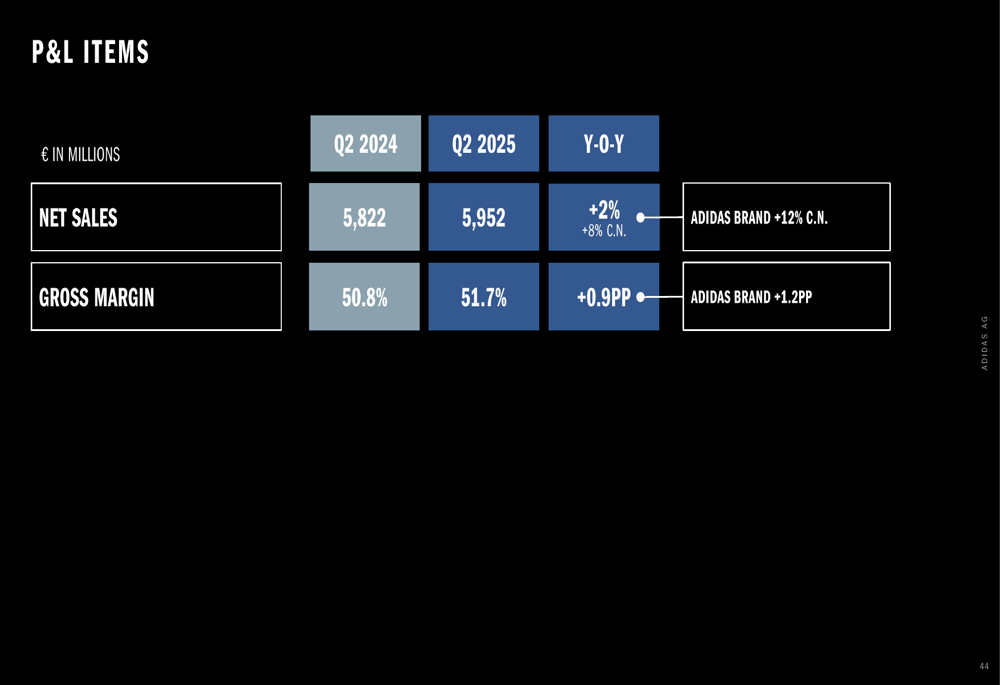
The company’s gross margin improvement was driven by several factors, with product costs creating some pressure, while freight costs, tariffs, and discounting had positive effects:
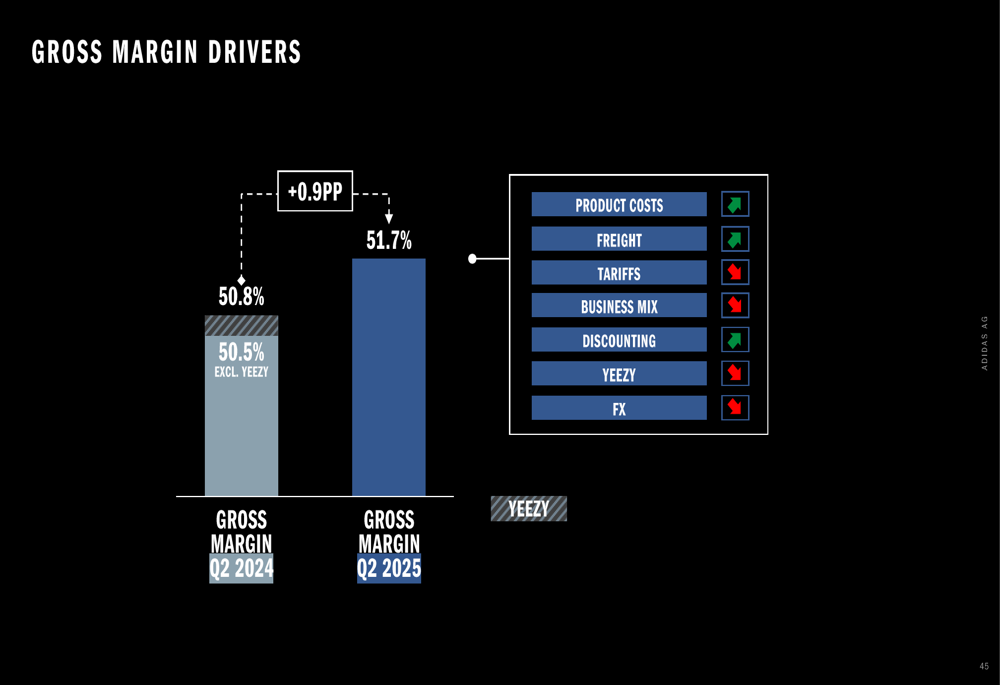
The bottom line showed significant improvement, with net income increasing by 77% and basic earnings per share growing by 86% compared to the same period last year:
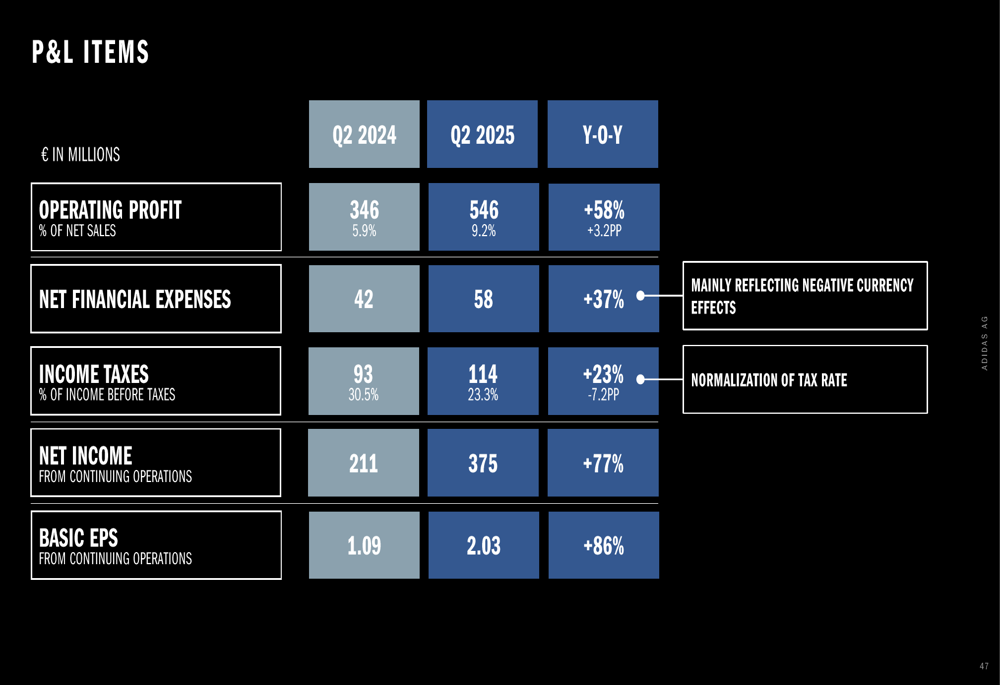
Regional and Product Category Analysis
Adidas demonstrated balanced growth across all regions, with particularly strong performance in Latin America, which saw a 22% increase in Q2 and 24% growth in H1. North America grew by 8% in Q2, Europe by 4%, Greater China by 2%, and Japan/South Korea by 13%. The Adidas brand outperformed the overall business in all regions.
The following world map illustrates the regional performance:
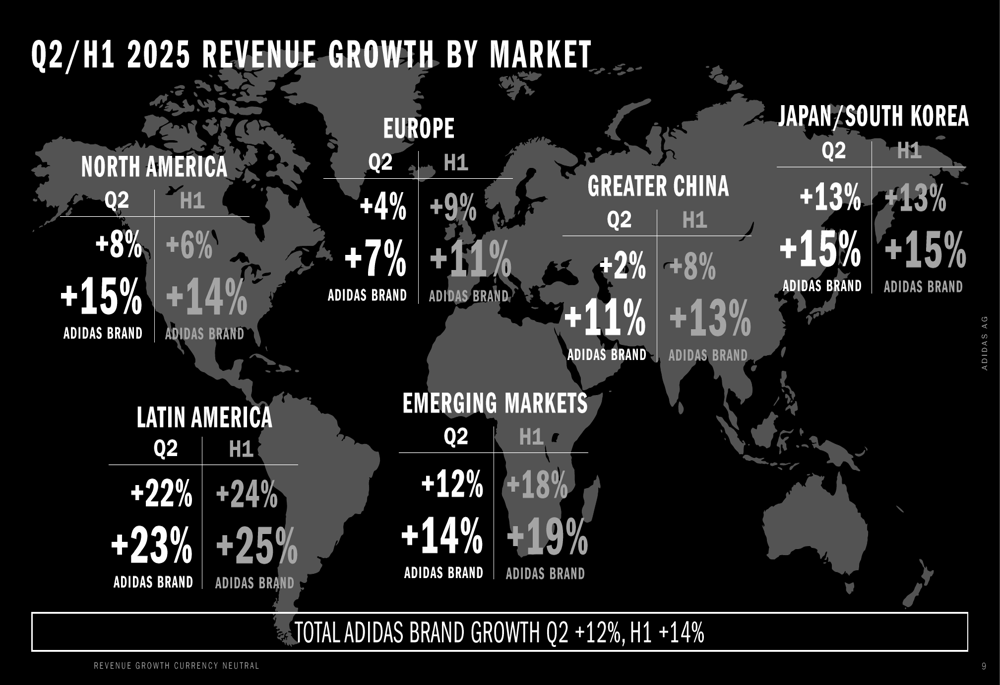
In terms of distribution channels, wholesale represented 61% of sales and grew by 14%, while direct-to-consumer channels accounted for 39%, with both own retail and e-commerce growing by 9%:

By product category, footwear represented 58% of sales with 9% growth, while apparel showed the strongest growth at 17%, accounting for 34% of sales. Accessories made up 8% of sales with 7% growth:

Financial Health and Balance Sheet Improvements
Adidas’ balance sheet showed significant improvements, though with some increases in working capital. Inventories increased by 16% compared to Q2 2024, reflecting the company’s preparation for anticipated future demand:
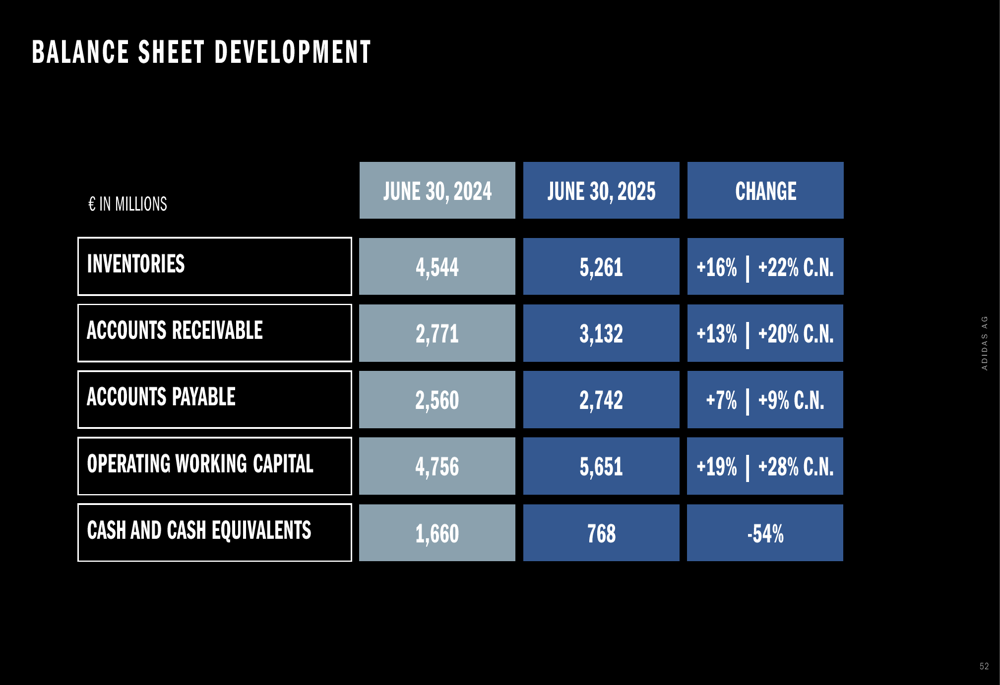
The company’s cash position decreased by €0.9 billion, while adjusted net borrowings increased by €0.3 billion:
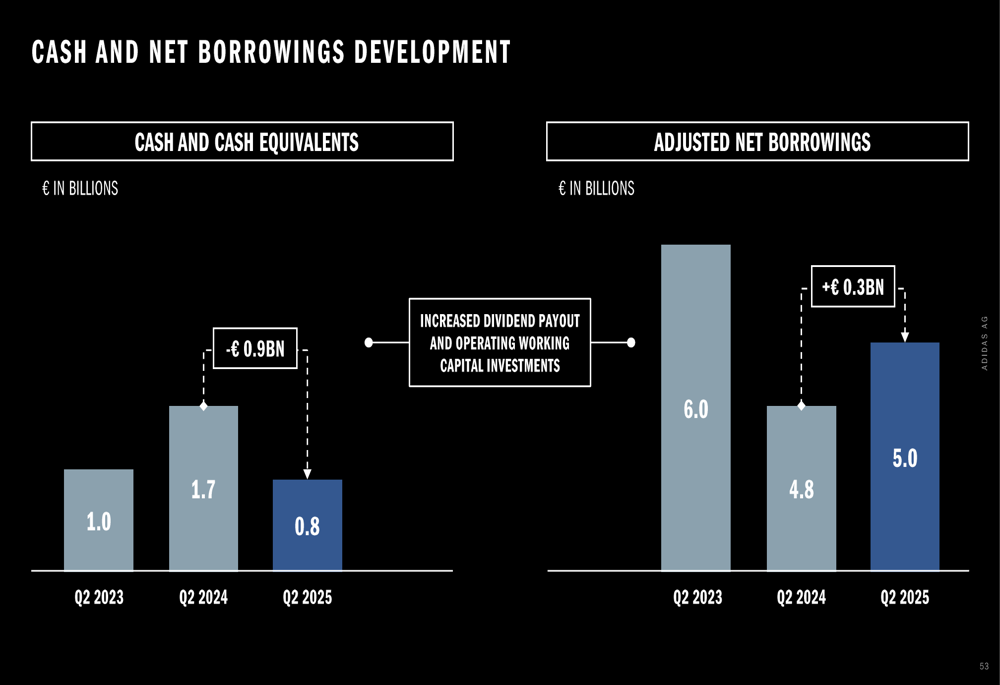
Despite these changes, Adidas significantly improved its net leverage ratio, which decreased from 4.8X in Q2 2023 to 1.7X in Q2 2025, leading to an S&P rating upgrade from ’A-’ to ’A’:
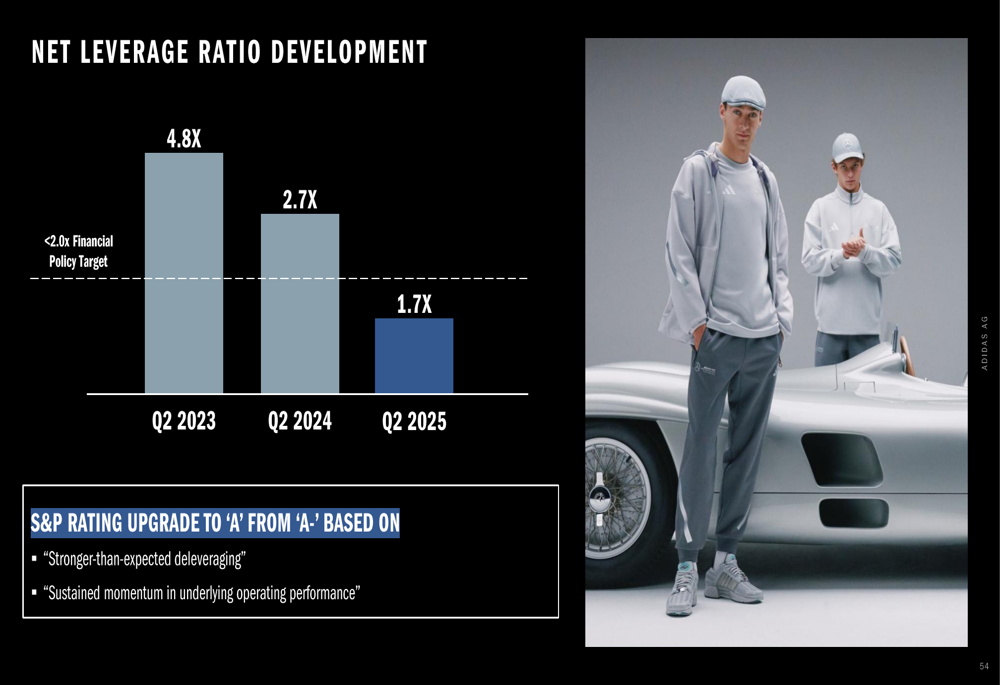
Outlook and Strategic Initiatives
Adidas continues to make progress toward its 2026 goals, with the company describing 2025 as the year to become a "Good Company" on its path to becoming a "Healthy Company" by 2026. The company is maintaining its full-year guidance despite acknowledging persistent macroeconomic and geopolitical challenges.
One specific challenge highlighted was the impact of US tariffs on countries of origin, with Adidas implementing measures to mitigate these effects by shifting production and capacity to minimize tax exposure.
The presentation emphasized Adidas’ strong brand momentum, with popular products including the Adidas Ballet Flat and continued success of classic models like Samba, Campus, and Superstar. The company also highlighted its "global brand with local mindset" approach, tailoring strategies to specific markets while maintaining consistent brand identity.
In the lifestyle category, Adidas is seeing strong performance from both classic models and newer lifestyle running shoes like the EVO SL, which has received positive reviews. The company continues to leverage strategic collaborations, including with Oasis, to enhance brand appeal and reach different consumer segments.
With its improved financial position and continued operational momentum, Adidas appears well-positioned to navigate external challenges while continuing its growth trajectory through the second half of 2025.
Full presentation:
This article was generated with the support of AI and reviewed by an editor. For more information see our T&C.
